
(3 - 10 Nov. 2014)
Ice drift
The ice camp moved about 35 nautical miles (65 km) during the week (Fig. 1). In terms of sea bed topography, we moved across the top of Lomonosov Ridge for the third time during this expedition. At the beginning of the week, the surface air pressure was very uniform over the entire Arctic Ocean through Tuesday. The rapidly moving low pressure system that passed Northern Norway on Monday became stationary over the New Siberian Islands on Wednesday and slowly merged with a low pressure trough extending from the Bering Strait. The result was an Arctic Ocean characterized by a low pressure region on the Siberian side and high pressure on the Alaska, Canada and Greenland side. Winds at our position were less than 10 knots during the week except on Thursday (>20 knots) and during the weekend (15 knots).
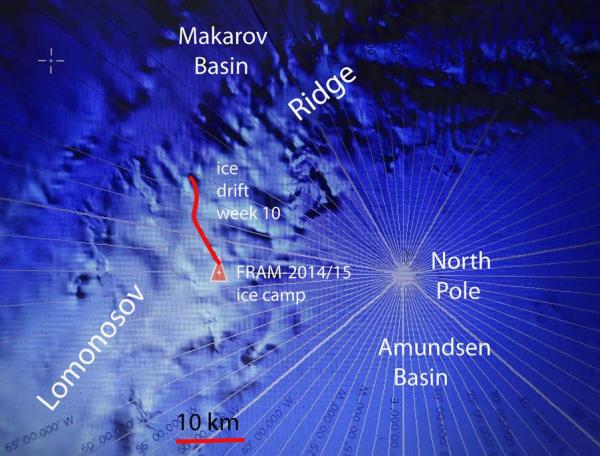
Fig. 1 Drift track of FRAM-2014/15 across Lomonosov Ridge during week 10
Sea ice dynamics
We have not noticed any sea ice activity during the week. The ice drift speed has varied very little.
Camp life
We experienced the coldest week so far during the FRAM-2014/15 ice drift. Temperatures were below -30° C during the entire week and below - 35° Monday through Wednesday with a maximum on Wednesday 5th Nov. below - 40° C. If we consider the wind chill, the felt temperatures were in the range of -55° C to -60° C (Fig. 2) . It was rather amusing to discover that temperatures below -40° C were off-scale for our AirMar weather station on the hovercraft. Work outside was difficult. The seismic data acquisition was not interrupted, but the lowest temperature interval pushed our make-shift heat box for the compressor to the limit. The main engine started instantly as always and the engine pre-heat is continuously switched on. When the temperature came back above -30° C again on Sunday, it felt kind of warm being outside.
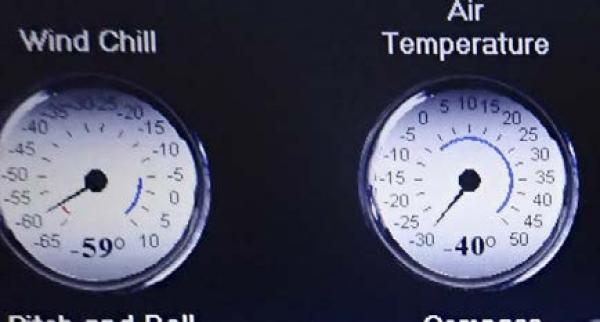
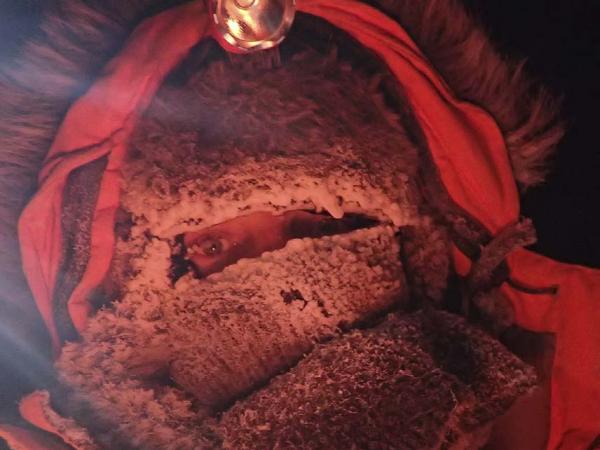
Fig. 2 Upper: Screen shot of the weather station display before it got out of range. Lower: Audun getting some fresh air.
This cold spell was actually an important reality check for us as it posed several questions; i) is the hovercraft suited for this kind of harsh environmental conditions, and ii) are you physically and mentally prepared for this. The answers to both questions are; Yes. We are impressed how well the hovercraft lives up to our expectations of providing comfortable accommodation and data logging facilities for our science program; the main issues being cabin temperature and condensation. One
oven keeps the cabin temperature at + 20 to +25° C for outside temperatures down to -30° C. When it gets colder than -30° C, the second oven is fired up and is capable of driving the cabin temperature beyond +30° C even if the outside temperature goes below -40° C. The water-borne heat from the radiator circuit on the floor around the cabin perimeter even makes it possible to comfortably walk bare feet on the cabin floor mat. Dripping water from the roof and windows due to condensation can be a serious threat to all instruments and the living comfort. Condensation problems inside the cabin are practically non-existent. The insulation of the cabin below deck level is by the approx. 20 cm thick air layer contained in the flotation tanks. Above deck, the cabin walls have 5 cm thick insulation built in and windows of the same kind as in aircrafts. We have covered the outside of the cabin and windows by 5 cm thick Glava winter mats. On top of that is a form fitted wind tight cover which extends over the deck and over the skirt, only access doors are free. In the rear of the hovercraft, we have left everything from the air intake and back exposed (Fig. 3).
As to the second question; we have both been exposed to similar conditions in the past and know what is involved. We have the necessary cold weather gear, and most importantly a comfortably heated safe heaven to retreat to.
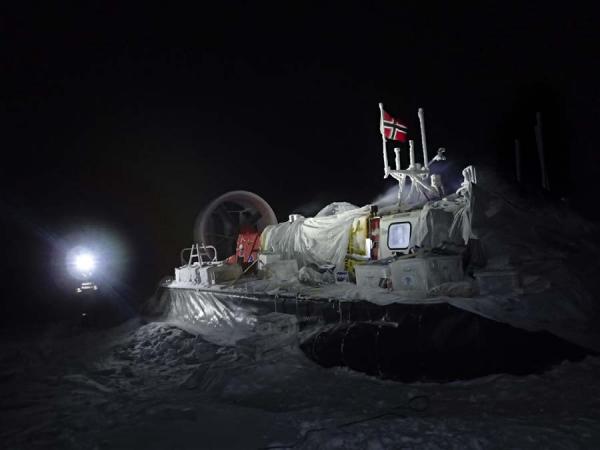
Fig. 3. The hovercraft Sabvabaa dressed up for the cold at 89° N.
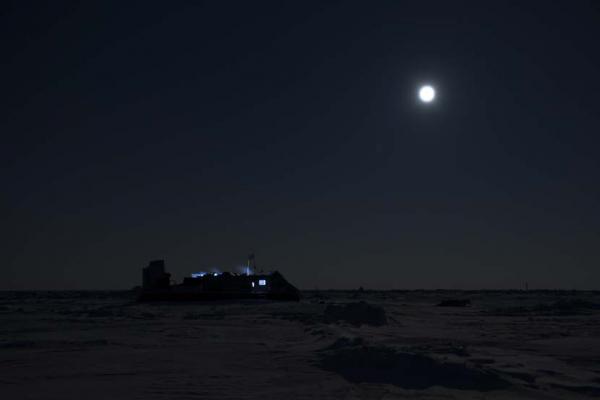
Fig. 4. The full moon shining 24 hours a day.
The cold temperatures are associated with clear skies. We have a beautiful full moon which lighten up the landscape 24 hours a day - a "mid-night moon" so to speak. This is an incredible sight and gives you the feeling of being on another planet - an icy one
.
Science
We are overseeing the following suite of continuous measurements:
Bathymetry and sub-bottom profiling:
- five autonomous echo sounder buoys reporting to shore via Iridium
- seismic reflection (0.3 litre air gun & single hydrophone), sub-bottom penetration ̴2 km
Oceanography:
- Acoustic Doppler Current Profiler 0- 500 meter depth
- two Aanderaa current meters at 800 and 1050 meter depth, respectively.
- thermistor string with 30 thermistors from the surface to 300 meter depth.
Atmosphere:
- measurement of incoming and outgoing radiation from the ice surface
- surface infrared skin temperature
- sun time
- Aanderaa weather station (wind, temperature and humidity)
The seismic reflection measurements continued to run well, unaffected of the cold spell. We crossed the top of Lomonosov Ridge and passed the level of the out-cropping? unconformity between the Cenozoic sediments and the older sediments below on both sides of the ridge (Fig. 5). While the level of the unconformity here is similar to the area where the scientific drilling (ACEX) took place in 2004 about 300 km away towards the Siberian side, the Cenozoic section is about 100 meter thinner. On the Makarov Basin side, we first tried to obtain a core below the projected unconformity level, but the core catcher was mysteriously lost in the process and the core barrel returned empty. The rock dredge was immediately deployed, but hooked on to excess wire laid down as it hit bottom and came up backwards. Working in -35° C on Monday, these misfortunes were really low points and hard to accept. On Saturday, we drifted over the outcrop level on the Amundsen Basin flank of the ridge. We got cold related winch problems and missed out on the steepest slope below the unconformity, but when the corer returned, it was empty with only stains of mud on the core catcher. It must have hit something hard. Because of the darkness and the severe cold, we consider it too risky to leave our camp and drive upstream to make another attempt at sampling.
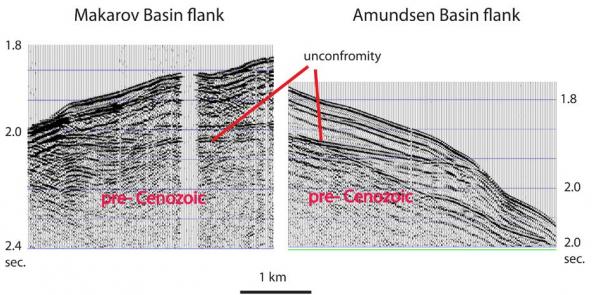
Fig. 5 Screen shot of the stratigraphic relationship below both flanks of Lomonosov Ridge
The acoustic image of rocks below the regional unconformity at the top of Lomonosov Ridge remains a mystery. The reflection pattern is a maze of randomly distributed diffractions with no apparent coherent reflections (Fig. 6 ). We have no velocity information to narrow down possible options.
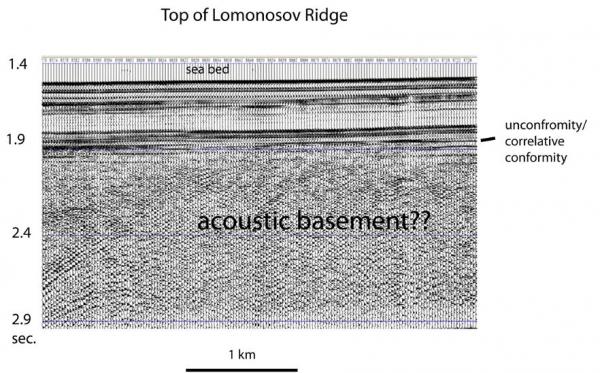
Fig. 6 Characteristic acoustic image of rocks below the unconformity at the top of the ridge.
As we passed the top of the ridge towards the Amundsen Basin, we saw a huge block of back-tilted stratified sediments with younger sediments on top resting on an unconformity (Fig. 7 ).
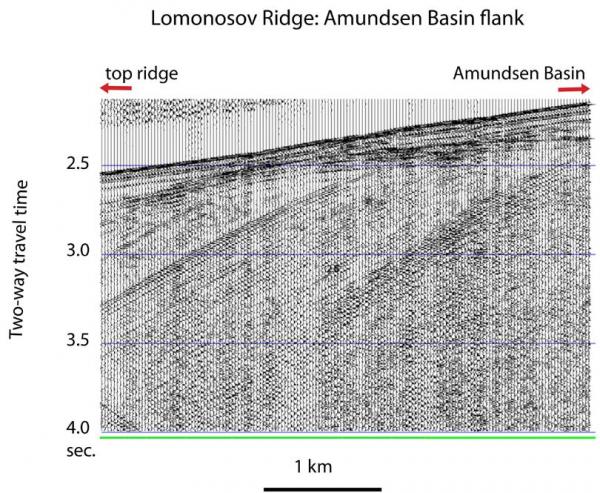
Fig. 7 The sediment package below the Amundsen Basin flank of Lomonosov Ridge
Moving along the slope, we made the first trial deployment of a special corer to recover sediments for the Ice2Ice project of the Bjerknes Centre and cooperating Nordic centers of excellence. The corer has no core catcher, but a shutter mechanism in order to minimize core disturbance. We recovered a 30 cm long sample which would represent something of the order of thirty thousand years. The aim of this EU-funded five year project is to investigate the possible connection between the state of the Greenland Ice Sheet and the Arctic and sub-Arctic sea ice cover. The focus is on abrupt events.
On Sunday, we made our third deployment of the camera sled (Fig. 8) and obtained 80 minutes of monitoring of the biological activity at the sea bed. The water depth was 1700 meter. We now have video footage from the sea bed at three depth levels on the Lomonosov Ridge; 1390, 1700 meter and 2650 meter, respectively. Each depth level is represented by at least 30 minutes of video. This project had no proponents from the Norwegian community of marine biologist. However, we considered it important to use the FRAM-2014/15 opportunity to obtain this information, and are open for requests to use the data for scientific studies of the marine life in the deep polar ocean. The self erecting camera sled was constructed from a discarded hot water tank picked up at the junk (resource) yard and worked very well. To the best of our knowledge, this is the first video footage ever made from sea bed on the Lomonosov Ridge, a submarine mountain chain of proportions that surpasses the European Alps.
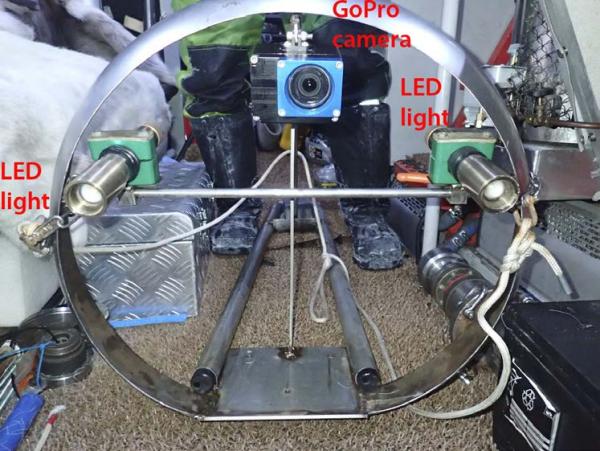
Fig. 8 . The self erecting camera sled.
No signs of animal life have been observed during the week
Life is treating us well.
Yngve Kristoffersen & Audun Tholfsen
Daily reports
Monday 03 November.
Position: 88 57.55' N, 115 06.1' W, temperature - 35° C, air pressure 1015 hPa, wind 2 knots from NNW. Ice drift 0.1 knots towards northeast. Shooting seismic reflection all day. Deployed the corer below the level of the unconformity. Found core catcher missing upon recovery. Serious winch problem as the Kevlar has worn a groove in the POM capstan from friction heat and the extra turns of cable on the capstan refuse to move sideways. Took four hours to get the corer up. Solved the problem by turning the winch 180 degrees and the groove moved out of the critical area.
Tuesday 04 November..
Position: 88 57,9' N, 113 58.4' W, temperature - 37° C, air pressure 1016 hPa, wind 6 knots from N. Ice drift 0.1 knots towards east. Shooting seismic reflection all day. Deployed the rock dredge, water depth 1485 meter. Unfortunately, Kevlar had been paid out too fast as it hit bottom and the cable got caught by the teeth of the dredge and it was pulled with the front facing backwards. Fired up the second oven in the rear of the hovercraft cabin to increase the temperature in the floor heat radiators.
Wednesday 05 November.
Position: 88 58.7' N, 111 31.1' W, temperature <- 40° C, air pressure 1017 hPa, wind 13 knots from NNW. Ice drift 0.2 knots towards east. Shooting seismic reflection all day. The diesel generator had a cracked fuel line which needed repair at 0400 hours. The air compressor is struggling as the pre-heating is getting marginal at these low temperatures
Thursday 06 November
Position: 89 00.8' N, 106 59.0' W, temperature - 30° C, air pressure 1011 hPa, wind 22 knots from N. Ice drift 0.3 knots toward east. Shooting seismic reflection all day. Audun started work to improve the outside work space. We removed snow from the store room in the remains of the ice hangar to use as temporary storage space. We lost the e-mail connection. Most likely a problem of time variable satellite constellations. Audun went on a moon lit ski trip to inspect the closest bathymetry buoy (#3). It had 10 cm snow on top of the box.
Friday 07 November.
Position: 89 03.1' N, 102 59' W, temperature - 32° C, air pressure 1012 hPa, wind 9 knots from WNW. Ice drift 0.2 knots towards east. Shooting seismic reflection all day. Our internett connection is restored.
Saturday 08 November.
Position: 89 06.2' N, 99 36.4' W, temperature - 30° C, air pressure 1018 hPa, wind 14 knots from the NW. Ice drift 0.3 knots towards northeast. Shooting seismic reflection all day. We are passing the projected outcrop level of the major unconformity on the Amundsen Basin side of Lomonosov Ridge. Deployed the sediment corer in 1460 meter water depth. Returned empty with only stains of mud in the core cutter - must have hit something really hard at the sea bed. At midnight, we
deployed the light corer to obtain undisturbed surface sediment for the Bjerknes Centre, water depth 2006 meter. Recovered 30 cm. of core.
Sunday 09 November.
Position: 89 09.9' N, 93 38.5' W, temperature - 22° C, air pressure 1007 hPa, wind 18 knots from N. Ice drift 0.3 knot towards northeast. Shooting seismic reflection all day. Deployed camera sled in 1700 meter water depth and obtained 80 minutes of video from the bottom.

